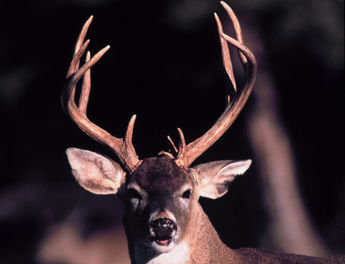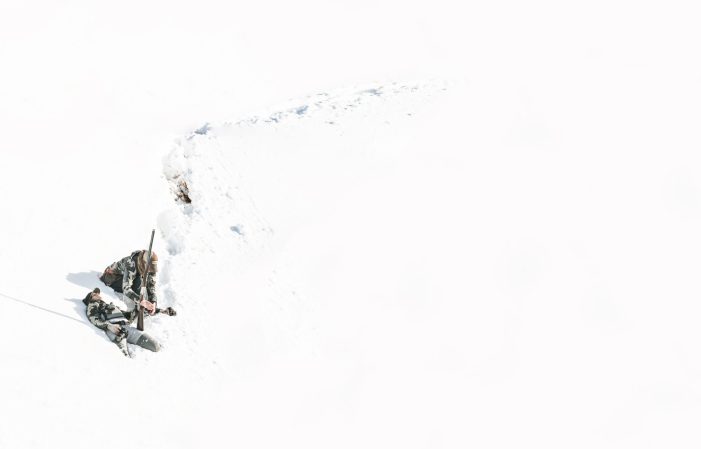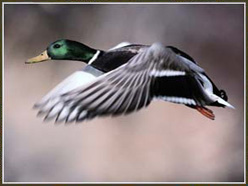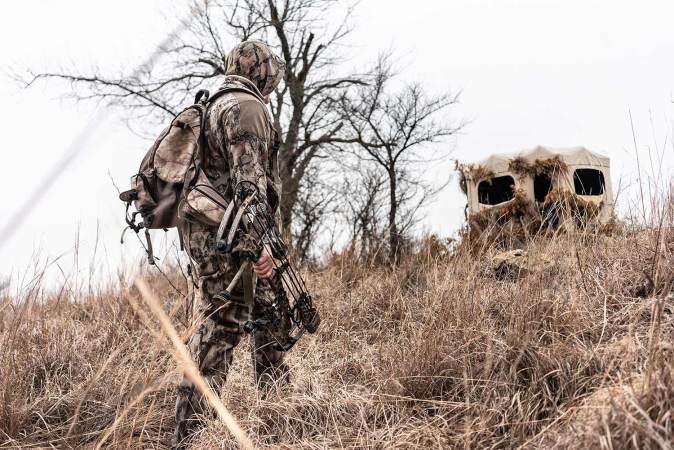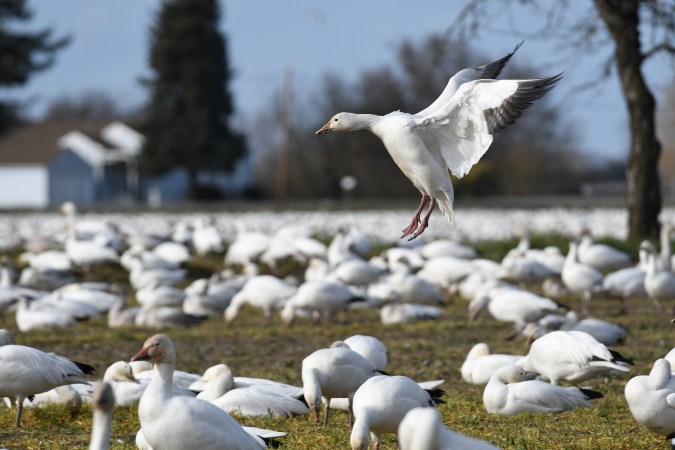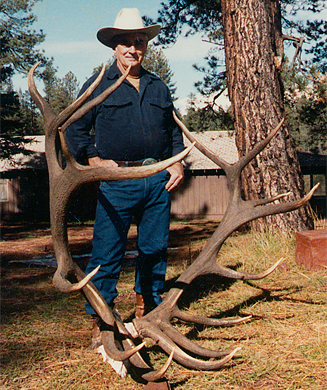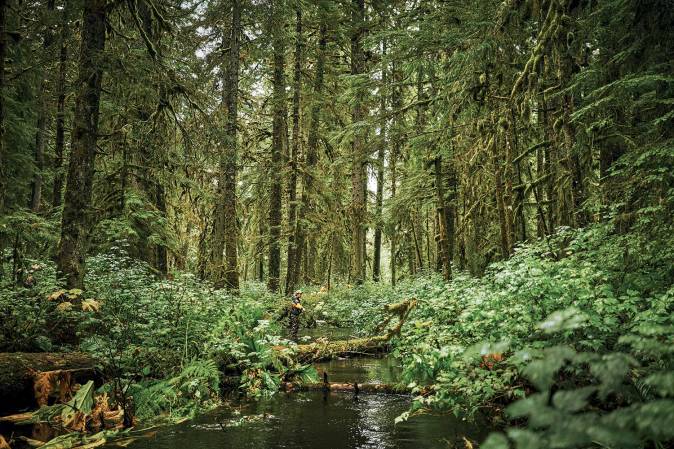For the second morning in a row I sat in a makeshift blind, a pile of tombstone-gray rocks and driftwood. I was two ducks away from a limit, staring through my binocular at a basket-racked buck and three does lapping up water at Lake Huron in the orange glow of the October sunrise. Somewhere behind them, in a tangle of aspen, cedar and skeleton-white birch, that same crazy grouse was drumming at the dawn again. The pulsing, staccato_ thump! thump! thump!_ carried across the water so clearly, I wondered if it could be heard over in Canada, just across the North Channel.
Hunting on Drummond Island was turning out to be one of those rare outdoor adventures that surpass even the greatest expectations. At my feet was a mix of mallards and ringnecks. The day before, it was a black duck and two buffleheads. Ducks. Deer. Grouse. At the waterfront cabin resort I was crashing at for the weekend, a bunch of rabbit hunters up from Grand Rapids had been matching my luck every day. running their beagles on snowshoe hares. Later that morning, I would stop along the road to help another bowhunter heave a doe into the back of his pickup.
As if this Eden-like variety of game wasn’t enough, as I glassed the little buck and contemplated where I might situate a beachfront bow stand in the morning, a black bear came dog-paddling out of nowhere. It swam right through the decoys, bound for Canada.
Well, it wasn’t really in the decoys, but the V-wake cut by its anvil-sized head gave a lively wobble to the dekes just as a knot of fast-flapping divers banked hard around the point off the big water and into that tranquil little island cove. Two shots. Two ducks. A drake bluebill and a goldeneye-a mixed double, thank you very much.
**Island Hopping **
Drummond Island-at 136 square miles, the largest U.S.-owned island in the Great Lakes-is accessible year-round, 24 hours a day by a car ferry from the eastern Upper Peninsula town of De Tour Village. Outside of what constitutes the island’s main town-a mishmash of stores, cottages and quaint rental cabins-the territory, except for a smattering of private holdings, is mostly Lake Superior State Forest, which means it’s open to public hunting with the same regulations that hold on the mainland. For a brochure, including a map and ferry schedule, contact Drummond Island’s Chamber of Commerce (800-737-8666; www.drummondislandchamber.com).
[pagebreak] There’s also a town on Beaver Island-notoriously overpopulated with deer and visible offshore from the northern Lower Peninsula town of Charlevoix-but a ferry trip there when the weather turns cold can be a miserably long, roller-coaster ride over the roughest seas. So if you go, take your Dramamine, or, better yet, shuttle your pickup and gear over on the ferry (April through December) while you take a plane via Charlevoix-based Island Airways, which operates daily year-round.
Beaver Island is the most remote Michigan island and, with only 550 full-time residents, the least populated. Nearly half of the island is public. Three nearby islands-High, Garden and Hog-are clustered around Beaver’s north shore and are totally uninhabited. These islands also hold deer and-since they’re in the middle of Lake Michigan-ducks of every sort during the peak autumn flights (www.beaverisland.org).
Small Island, Big Bucks
Heading south toward Traverse City and the nearby Sleeping Bear Dunes National Lakeshore, deer hunting on North Manitou Island has been legal since 1985. From four bucks and five does released there in 1926, the whitetail population grew so out of control that biologists actually documented deer turning to a diet of dead alewives washed up on the beach during winter.
Hunting on North Manitou is allowed by special seasons (archery, October 1-14; muzzleloading, October 15-20; and regular firearms, October 21-November 7). Permits are availabble (via a generously awarded lottery) from the Sleeping Bear Dunes Park Superintendent’s office (231-326-5134). While the tiny island has an extensive primitive road and trail system, North Manitou is managed as a wilderness area, so no wheeled vehicles of any kind are allowed. Roughly seven miles offshore, the island is accessible only by private boat or via the Manitou Island Transit passenger ferry operating out of the northern town of Leland. (For schedule and rates, call 231-256-9061.)
I hunted Manitou once a couple of years back knowing nothing about the island except that people occasionally stumble into some monster bucks here. As far as difficulty went, you could walk across the entire island before noon and-if you weren’t concerned with antlers-probably have a deer down before you reached the other side. The woods were deep and quiet except for periodic shots from a handful of other hunters. Though the area is no bigger than a postage stamp on the map, the feeling of solitude was intoxicating. Best of all, deer were everywhere. The place was crawling with them. In short, it was everything a person might dream hunting on an island would be.
